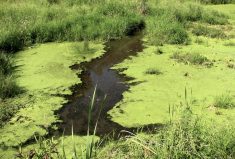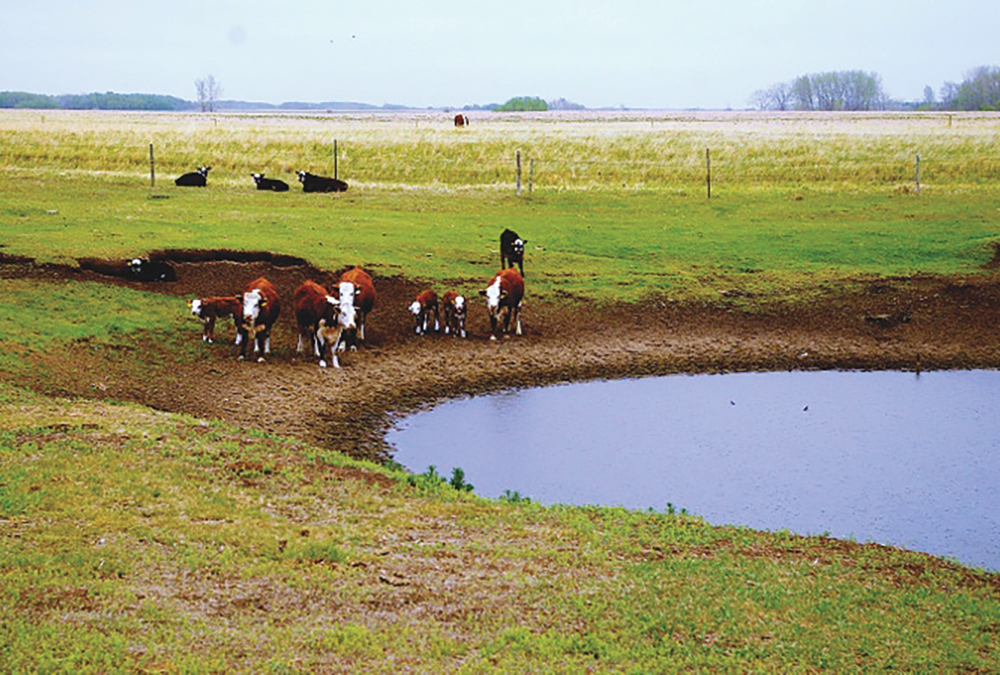An Alberta Agriculture and Forestry agricultural water engineer, has a warning about the dangers of blue-green algae.
“Blue-green algae is actually cyanobacteria, and can produce toxins that can be very dangerous,” said Shawn Elgert. “It can cause organ damage or even death if ingested by humans, livestock or pets.”
Blue-green algae can often be hard to identify.
“Some people say it looks like pea soup or grass clippings suspended in the water,” he said. “They may even see some scum with a blue-green tinge dried up on the beach or shoreline.”
Read Also

Mosquito-borne virus could be devastating to sheep breeding operations
Cache Valley virus, a mosquito-borne disease that infects small ruminants, could be a devastating hit to small operations.
If blue-green algae is suspected in a dugout, err on the side of caution.
“Don’t swim or bathe in the water and remove your livestock from it. Don’t consume the water even if treated — and that includes fish from the water — and don’t use the water on your vegetable garden.”
Dugouts can be treated using a copper product registered for use on cyanobacteria.
“Once you treat the algae, you need to avoid the water for at least two weeks,” said Elgert. “Once the bacterium dies, the cell structure breaks down and releases the toxins into the water, so it’s vital to stay away from the water while this is happening.”
There are also preventive measures that can be taken to avoid the problem.
“Temperature is a very important factor in the growth of cyanobacteria, so a deeper dugout with slopes that are not too flat would help make the dugout water cooler. This will help prevent cyanobacteria from growing.”
Nutrients are also required for growth of cyanobacteria.
“We have information on how to reduce nutrients from entering the dugout in our Quality Farm Dugouts manual. Buffer strips and grassed waterways are examples of how you can reduce nutrients. Aeration of the dugout can also help, as can using a dye in the dugout to help prevent photosynthesis from occurring, thereby reducing the growth of cyanobacteria. However, one action alone will not be enough to prevent growth.”
Wind can push the cyanobacteria into highly concentrated pockets where the risk of harm is higher, he said.
“Also cyanobacteria can rise or fall in the water column so inspection of the dugout should include peering into the deeper part of the water. Always be safe around the dugout by going along with another person and have a rope with a flotation device attached.”
For more information or assistance, contact an Alberta Agriculture water specialist at 310-FARM (3276) or search for visit the Alberta Agriculture and Forestry website.















